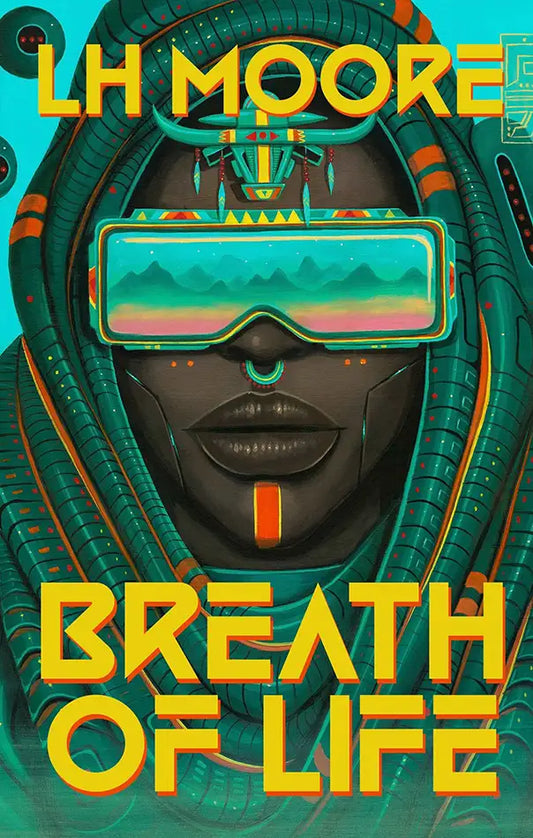
We’re just past the halfway point of 2016, and A. Merc Rustad is on track to have more pieces of short fiction published this year than there are months in the calendar. That isn’t bragging, it’s proof this is fiction people have an itch to read. Merc’s fiction is personal, raw, intimate, and powerful, featuring strong characters who are either on a journey to know exactly who they are, or have already reached that point and are waiting for others to catch up. With fiction recently published or forthcoming in Fireside Fiction, Shimmer, Lightspeed, Intergalactic Medicine Show, Daily Science Fiction, Mothership Zeta and the anthologies Dangerous Women, Wilde Stories 2016: The Year’s Best Gay Speculative Fiction, and Transcendent: The Best Transgender Fiction 2016, (and that’s just in 2016!), Merc’s work is everywhere. Isn’t it time you found out why?
At first blush, “The Gentleman of Chaos” reads like a typical epic fantasy story. Alongside lyrical prose that you pulls you right in, you find some familiar epic fantasy trappings — a dead king, a new king, the new king’s bodyguard, mythology, and masking insecurity with control. The titular gentleman is many things — an assassin, a smiling shadow, a sadist, a boogeyman, a savior, and to some, a path to freedom.
The Gentleman of Chaos is the person who comes to you when no one else will. The Gentleman might help you get to where you need to be, or not. The Gentleman listens in the dark, and hears your true voice. The Gentleman is an inescapable mirror, cruel to those who hide from their true selves. What will you say when the Gentleman darkens your doorstep? This is a story about identify, and finding the people in your life who see you for who you are underneath the constrictions of societal expectations. Sometimes people know who we are before we know ourselves.
Have you realized we left “typical” behind a long time ago?
Once you’ve devoured “The Gentleman of Chaos,” I highly recommend heading over Glittership to read Merc’s now famous story “How to Become a Robot in 12 Easy Steps.” Similar to “The Gentleman of Chaos,” “How to Become” is raw and personal, and ends up being something darkly different than what you expect. Something else both of these stories have in common is a final scene that radiates hope and optimism. Merc was kind enough to answer a handful of my questions about writing on themes of identity, how fiction is cathartic, a novel that’s in the works, telling stories through film, and more. I hope once you finish reading this interview that you’ll explore more of Merc’s work.
A. Merc Rustad is a queer transmasculine non-binary writer who lives in the Midwest and enjoys dinosaurs, robots, tea, monsters, playing video games, watching movies, and wearing awesome hats. To learn more, follow Merc on twitter at @Merc_Rustad or visit https://amercrustad.com
APEX MAGAZINE: You use poetic and lyrical prose to tell a dark, dark story. What inspired this story?
A. MERC RUSTAD: “The Gentleman of Chaos” is one of those stories that just clawed its way out of me in one sitting. A lot of it was sparked by frustration at being misgendered myself, and feeling trapped in different life situations. You know when you internalize something enough, you just need to process it somehow? Yeah, well apparently I needed to write about the Gentleman of Chaos and his transformation. It was very cathartic.
AM: Not only does Vessai’s brother take away his freedom, he takes his name, he takes one identity away from him, and forces another upon him. How is Vessai psychologically dealing with what his brother has done?
AMR: Compartmentalizing. Which is a thing I do, too. (I am not, however, a super assassin. Just in case anyone was worried.) It’s a survival instinct; you have to make different spaces to tuck away awful things, sometimes, so you can function.
AM: When you were writing this story, how did the theme of identity (and loss of and/or finding of)work into your writing process?
AMR: I have K.M. Szpara to thank for refining this point — I basically threw it at him and was like ‘please to help WHAT AM I DOING?’ and he pointed out the layers of identity theme in the story. Once he helped point out there were basically three different sets of identity hats Vessai is wearing: his own name, the mantle of the Gentleman, and the idea of being “She” imposed by his brother. It took a lot of work to smooth out the threads and make sure everything connected in the end, and I’m very proud of how that turned out.
AM: Vessai has become accustomed to being treated as someone without identity, but that changes when he meets Vyren, and Vessai is finally accepted for who he is. Can you tell us a little more about Vessai’s struggles with interacting with those around him, in regards to how his brother and many others view him?
AMR: How people perceive Vessai has a lot to do with how he’s labeled in society (and especially by the king). There’s physical appearance to deal with — he may not care about passing as cis, but there will always be people who expect that of him when they know he’s a man. But there are also people, like Vyren, who can recognize gender is not exclusive to what sort of body-shape you have or what’s between your legs.
AM: At the end of the story, Vessai takes on a new … let’s call it a new career. What does the future hold for him?
AMR: I’m pretty sure he goes on to be more epic and awesome, carrying over the folk legends he inherited. Also keeping his daughter safe. He and Vyren get to live long and have a healthy, mature, happy relationship. We need stories like that. I’m giving Vessai his happy ending.
AM: Your fiction has appeared in a wide variety of magazines, including Lightspeed Magazine, Vitality Magazine, Scigentasy, Cicada Magazine, and many others. How do you decide which magazines to submit your work to? Are there particular types of magazines you prefer to be published in?
AMR: I look at a few elements when choosing to submit: do I like it? does it pay well? (I have cookie supplies to maintain) Is it easily available? That last point is why I love online venues that offer content freely, as well as in subscription models. When I was a tiny!Merc just setting out into the realm of short fiction, I was very limited to either what I could read online for free or find at the library. So I’ve always had a deep admiration for magazines that choose to offer stories readily — it’s an accessibility issue as well. I want to reach as many people as I can; I’ve gotten wonderful feedback from readers who find my work, and it makes me so happy and grateful when I can reach someone who might not have been able to read my words otherwise.
AM: You’ve mentioned that your short story “How to Become a Robot in 12 Easy Steps” has autobiographical elements. Was it difficult publishing something so intimately personal? Was it freeing?
AMR: It was the hardest story to send on sub and receive rejections on. But once it was out there (first in Scigentasy, then in GlitterShip podcast, then in BASFF2015, and soon reprinted in Cicada as well!), once I started hearing from people who connected with that story, or who knew people like Tesla, it was worth all the work and fear and struggle. Because yes, it was freeing to be able to share this. And to know that others could find hope in it, that is the greatest praise I could ever imagine.
AM: I hear you are working on a novel that takes place in same world as “Tomorrow When We See the Sun” (Lightspeed, Dec 2015). What can you tell us about the novel, and the world in which it takes place?
AMR: Well! It has a lot of cyborgs. And spaceships! Also the majority of the POV characters are non-binary (three of five). The micro pitch I’m working with is: a disgraced priest joins forces with a resurrected scientist, a semi-immortal mercenary, and a murderous spaceship to prevent the universe from being rebooted and all life wiped out. No pressure.
Writing got a little derailed because the last six months or so have been a whirlwind of finishing college, getting a new job in my field (yaaay!), and moving. Lots of moving. But I’m super excited to be working on the novel again. I hope people will be able to enjoy The Dark of a Billion Suns eventually!
AM: You also tell stories through short films. What does film allow you to do that prose doesn’t? When you come up with a story idea, how do you know if it’s best told through words on a page, or through images and sound on a screen?
AMR: For short films, I tend to think in terms of images: could I describe this in words and have the same impact vs. if I showed it in visuals on screen? It’s hard to figure out sometimes. It’s also, currently, a question of: would I have the budget to make this film? Heh. There are definitely ideas I know need to be movies. The difference for me — what film can do and prose can’t, and vice versa — is a lot about the aesthetic. What is the sound design like? What can the camera show? How much is voice and POV going to bring to this story? For example, I like horror more as a visual/auditory medium, so a lot of the time when I think about horror, I picture it as a movie or short film. Whereas epic space opera, I tend to think in terms of word-aesthetics and prose.
How film and prose effectively show a story is something I think about a lot! If you’ve seen the utterly disturbing horror/thriller, The Invitation (2016), the final image has such impact that I’ve been pondering for months how one could effectively pull off that same effect in prose — I don’t think I could! It’s an example, for me, of a story that needs to be visual to give the full gut-punch at the end. Similarly, a movie like Sinister (2013) is so visually demanding that I don’t think it could work as effectively in prose. (Plus, I mean, the whole conceit is based in Super 8 tape, so there’s that.)
When I think about some of my stories (like “How to Become A Robot in 12 Easy Steps”), I imagine how I could adapt it for screen, and if I could. That story? No. It was so intensely prose with style and format and voice, I don’t think it would function visually.
But there are other stories I think I could — with a budget! Ha — translate into visuals. It’s a very case-by-case basis. Definitely something that has helped my writing has been working with a camera and producing short films. Understanding my limitations with the medium, repeating a scene over and over to get the best takes, juggling a crew and actors, editing ... everything about making a short movie gets absorbed into my prose-writing brain. (This summer, I’m crewing on a short film that deals with workplace harassment and supernatural plants. It’s a story I think needs to be visual, and that’s why we’re making it a film vs prose.)
Ultimately, I want to consider what each medium brings to a story and what the final effect is supposed to have on the reader/viewer. How do I see this story? It’s a fascinating process to consider when idea-churning.
AM: Thanks, Merc!











